Beetle Control
Welcome to Brothers Pest Management, your local beetle pest control company in Minnesota.
We specialize in providing effective pest control solutions to homeowners and businesses throughout the area. Among the many pests that we encounter in Minnesota, beetles are a particularly common nuisance. In this page, we will discuss the different types of beetles that are commonly found in Minnesota and how we can help you get rid of them.
Common Beetles in Minnesota
Asian Long-Horned Beetle:
This beetle is an invasive species in Minnesota and can cause significant damage to trees. They are black with white spots and have long antennae. Asian Long-Horned Beetles prefer to feed on hardwood trees, such as maple, birch, and elm.
Japanese Beetle:
Japanese Beetles are another invasive species in Minnesota. They are metallic green with bronze wing covers and have small white tufts on their sides. Japanese Beetles feed on the leaves, flowers, and fruit of a wide variety of plants and can cause significant damage to gardens and landscapes.
Powderpost Beetles:
Powderpost Beetles are a common indoor pest in Minnesota. They are small, reddish-brown beetles that can be found in hardwood furniture, flooring, and structural timbers. They feed on the wood and can cause significant damage if left untreated.
Carpet Beetles:
These beetles are a common indoor pest in Minnesota. They are small, oval-shaped beetles that can be found in carpets, upholstery, and clothing. They feed on natural fibers, such as wool, silk, and cotton, and can cause significant damage if left untreated.
How Brothers Pest Management Can Help?
At Brothers Pest Management, we offer a range of beetle pest control services to help you get rid of these pests once and for all. Our experienced pest control technicians will conduct a thorough inspection of your property to identify the type of beetle infestation you have and develop a customized treatment plan to eliminate the problem. We use safe and effective beetle pest control products and techniques to ensure that your home or business remains pest-free.
Contact Us Today!
If you're experiencing a beetle infestation in your home or business, don't hesitate to contact Brothers Pest Management. We're here to help you get rid of these pests quickly and effectively.
Contact us today to schedule a free consultation and learn more about our beetle pest control services in Minnesota.
Beetles in Minnesota
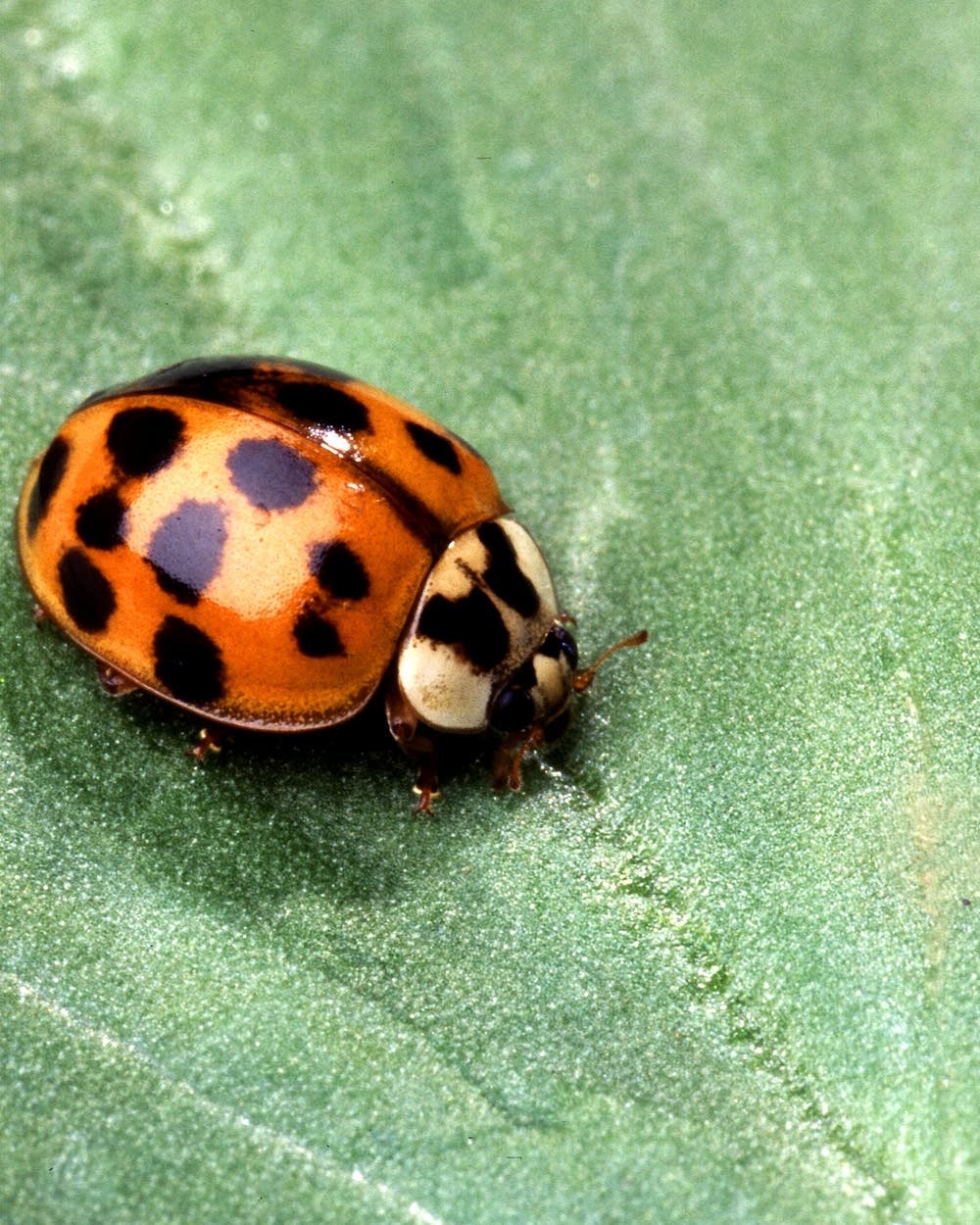
Asian Beetles
Harmonia axyridis, most commonly known as the harlequin, multicoloured Asian, or Asian lady beetle (Asian Beetle), is a large coccinellid beetle. This is one of the most variable species in the world, with an exceptionally wide range of colour forms.
Asian beetles have four distinct life stages: egg, larva, pupa and adult. The multicolored Asian lady beetle adults begin laying eggs on host plants in early spring. Eggs hatch in about three to five days, and larvae begin searching on plants for aphids and other soft-bodied arthropods on which to feed.
Asian lady beetle and other lady beetle species feed on aphids and other soft-bodied insects that can damage plants in agricultural crops, gardens and landscapes. These are beneficial insects to farmers and gardeners.
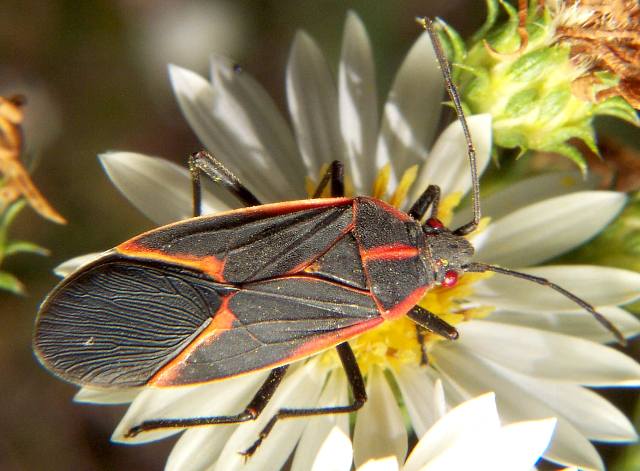
Boxelder Bugs
The adults are about 13 millimetres (0.51 in) long with a dark brown or black coloration, relieved by red wing veins and markings on the abdomen; nymphs are bright red.
The boxelder bug is sometimes confused with insects belonging to the genus Jadera, and with the western boxelder bug (Boisea rubrolineata) which it is related to the name "stink bug"
Boxelder Bugs feed, lay eggs and develop on boxelder trees, most commonly occurring on female trees as they produce seeds.
Boxelder bugs prefer seeds; however, they also suck leaves. They can be frequently observed on maple as these trees provide them with seeds as well.
Boxelder bugs overwinter in plant debris or protected human-inhabited places and other suitable structures.

Carpet Beetles
The varied carpet beetle is a 3 mm-long beetle belonging to the family Dermestidae. They are a common species, often considered a pest of domestic houses and, particularly, natural history museums, where the larvae may damage natural fibers and can damage carpets, furniture, clothing, and insect collections.
Varied carpet beetles typically lay 40 eggs which take 10 to 20 days to hatch. The larvae live for 220 to 630 days before pupating. They remain as pupae for 10 to 13 days before emerging as adults. Female adult varied carpet beetles live 2 to 6 weeks while the adult males live 2 to 4 weeks.
Carpet beetle mating usually takes place near a light source, and the female then can lay up to 100 eggs at once. After the eggs are laid, it takes only seven to 35 days for them to hatch into larvae.
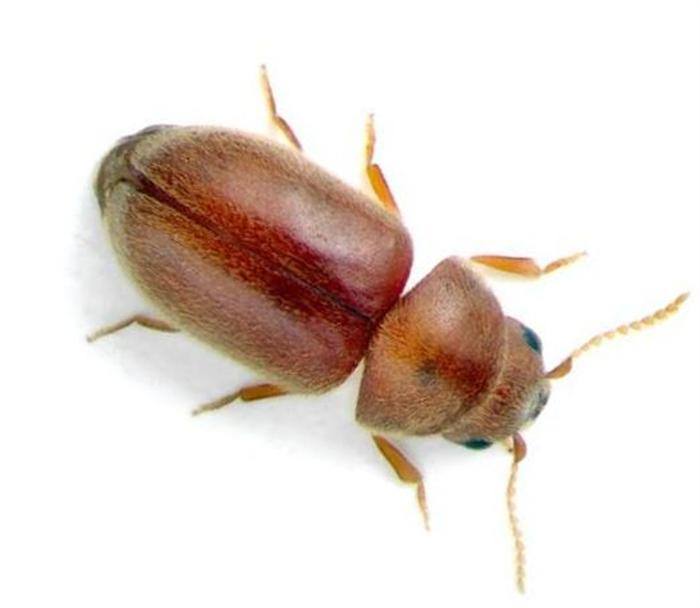
Cigarette Beetles
Lasioderma serricorne, commonly known as the cigarette beetle, cigar beetle, or tobacco beetle, is an insect very similar in appearance to the drugstore beetle and the common furniture beetle. All three species belong to the family Ptinidae. L. serricorne is around 2–3 mm long, and brown in colour.
Tobacco beetles have a life cycle - egg, larva, pupa and adult - that lasts about 10 to 12 weeks total. The female adult can chew its way through paper or tobacco leaf, and finds in cigars a suitably warm environment to lay its eggs, small white ovals that are too small for the human eye to detect.
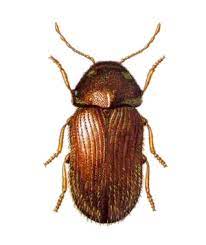
Drug Store Beetles
The most common small brown beetles are the drugstore beetles, also known as bread beetles or biscuit beetles. They are one of the most common stored produce pest insects in the U.S. These beetles get their name from their love of stored products and, oddly, prescription drugs.
Cigarette beetles eat a wide variety of foods, including cereal, coffee beans, spices, rice, dried fruits, animal based products and pet food. They may even chew through cardboard boxes and food packaging, so only items stored in airtight containers are completely safe from these pests.
Female drugstore beetles lay single eggs in areas where they feed. Once eggs hatch they become larvae and feed on nearby food sources. The female can lay more than 100 eggs over a single lifetime. These eggs take about nine days to hatch and become larvae.
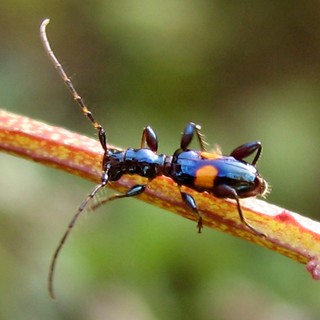
Flower Longhorned Beetles
True to their common name, Flower Longhorn Beetles (family Cerambycidae, subfamily Lepturinae) are found on flowers where they feed on pollen and nectar. They have a particular affinity for the umbel flowers produced by members of the carrot/parsley/celery family (Apiaceae, formerly Umbelliferae).
Flower longhorns are the fashion models of the beetle world. Their slender and highly stylized outline is reminiscent of that of wasps; although they would never be mistaken by such because they have the characteristic hard shell (elytra) of all beetles covering their membranous wings.
Flower longhorns love flat open blossoms of the umbrella type, such as the members of the carrot family. They also like flowers of the rose and aster family as well as wild hydrangea. They feed on their pollen.
Their larvae don't have such wholesome habits. They are wood borers, meaning that they feed on wood. However none has been reported as a serious pest of trees. Perhaps trees have enough defenses against them or there are enough enemies to keep their numbers from getting out of control.

Japanese Beetles
The Japanese beetle is a species of scarab beetle. The adult measures 15 mm in length and 10 mm in width, has iridescent copper-colored elytra and a green thorax and head
Japanese beetles feed on the leaves, flowers or fruit of more than 300 species of plants.
Japanese beetle grubs are pests of turfgrass. They chew grass roots, causing the turf to brown and die. Grub-damaged turf pulls up easily from the soil, like a loose carpet.
Japanese beetle infestations in Minnesota are mostly found in the Twin Cities metropolitan area and southeast region of the state.
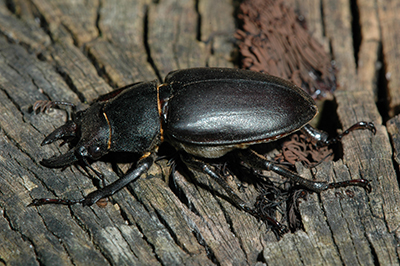
Stag Beetles
Stage Beetles are found around decaying logs and stumps in deciduous forests, parks, and neighborhoods with trees.
Larvae feed on decaying wood, adults feed on tree sap.
The name “stag beetle” refers to the oversized mandibles on some males that resemble deer antlers.
Another common name for this beetle is pinching bug stuff

Stink Bugs
The brown marmorated stink bug is an insect in the family Pentatomidae, native to China, Japan, Korea and other Asian regions. In September 1998 it was collected in Allentown, Pennsylvania, where it is believed to have been accidentally introduced.
Brown marmorated stink bug feeds on a wide variety of host plants, including a variety of fruits (e.g., apples, stone fruits including peaches and apricots, figs, mulberries, citrus fruits and persimmons), crops (e.g., beans, corn, tomatoes and soybeans) and many ornamental plants and weeds.
Most stink bugs are plant feeders. The first generation in the spring often feed on weeds or grasses. As they develop into adults, they often migrate into fields, orchards and residential landscapes. In these environments, stink bugs feed on apples, peaches, berries, peppers, beans and pecans.
REQUEST A FREE ESTIMATE
OR CALL US AT
(612) 431-PEST (7378)
QUICK LINKS
CONTACT US
Brothers Pest Management
(612) 431-PEST (7378)




